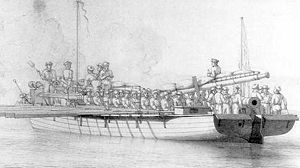
The Gunboat War was a naval conflict between Denmark–Norway and the British during the Napoleonic Wars. The war's name is derived from the Danish tactic of employing small gunboats against the materially superior Royal Navy. In Scandinavia it is seen as the later stage of the English Wars, whose commencement is accounted as the First Battle of Copenhagen in 1801.

The Battle of Anholt was a successful British military operation under the command of James Wilkes Maurice against the Danish-held island of Anholt under the command of Jørgen Conrad de Falsen, taking place during the Gunboat War, a conflict between the United Kingdom and Denmark-Norway that was part of the wider Napoleonic Wars. It was an attempt by the Dano-Norwegians to recapture Anholt, a small Danish island off the coast of Jutland which the British had captured in 1809. Early in the Gunboat War, the Dano-Norwegians had closed their lighthouse at the easternmost point of Anholt. In January 1809, the bomb-vessel Proselyte, which the British had stationed off Anholt to act as a lighthouse, struck Anholt Reef and sank. On 18 May 1809, the 74-gun Third Rate HMS Standard, under Captain Askew Hollis, led in a squadron that also included the frigate Owen Glendower, and the vessels Avenger, Ranger, Rose, and Snipe. Together they captured the island.

HDMS Najaden was a frigate of the Royal Dano-Norwegian Navy, which she served from 1796 until the British captured her in 1807. While in Dano-Norwegian service she participated in an action at Tripoli, North Africa. She served the Royal Navy as the fifth rate HMS Nyaden from 1808 until 1812 when she was broken up. During her brief British service she participated in some small attacks in the Barents Sea during the Anglo-Russian War.
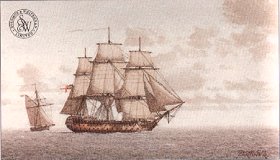
HMS Edgar was a 74-gun third-rate ship of the line of the Royal Navy, that saw service in the American Revolutionary, French Revolutionary and Napoleonic Wars. Launched in 1779, she fought in the battles of Cape St Vincent and Copenhagen, two of the major naval engagements of the wars.
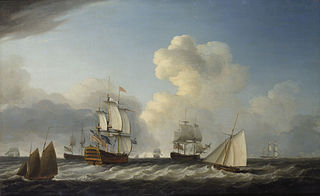
HMS St George was a 98-gun second rate ship of the line of the Royal Navy, launched on 14 October 1785 at Portsmouth. In 1793 she captured one of the richest prizes ever. She then participated in the Naval Battle of Hyères Islands in 1795 and took part in the Battle of Copenhagen in 1801. She was wrecked off Jutland in 1811 with the loss of almost all her crew.
HMS Dictator was a 64-gun third-rate ship of the line of the Royal Navy, launched on 6 January 1783 at Limehouse. She was converted into a troopship in 1798, and broken up in 1817.

HMS Tartar was a 32-gun fifth-rate Narcissus-class frigate of the Royal Navy, built at Frindsbury and launched in 1801. She captured privateers on the Jamaica station and fought in the Gunboat War and elsewhere in the Baltic before being lost to grounding off Estonia in 1811.

HMS Sheldrake was a Royal Navy 16-gun Seagull-class brig-sloop. She was built in Hythe and launched in 1806. She fought in the Napoleonic Wars and at the Battle of Anholt during the Gunboat War. She was stationed in the mouth of the river Loire in 1814 after Napoleon's abdication to prevent his escape to America. She was sold in 1816.
HDMS Brev Drageren was a Danish let brigger, launched in 1801. She was one of the many vessels the Danes surrendered to the British after the Battle of Copenhagen in 1807. She was subsequently added to the Royal Danish Navy as HMS Brev Drageren, and was involved in two notable actions while in British service. She was sold in 1825.

HMS Calypso was a Royal Navy Cruizer-class brig-sloop. She was built at Deptford Wharf between 1804 and 1805, and launched in 1805. She served in the North Sea and the Baltic, most notably at the Battle of Lyngør, which effectively ended the Gunboat War. Calypso was broken up in March 1821.

HMS Belette was an 18-gun Cruizer-class brig-sloop, built by King at Dover and launched on 21 March 1806. During the Napoleonic Wars she served with some success in the Baltic and the Caribbean. Belette was lost in the Kattegat in 1812 when she hit a rock off Læsø.

The Battle of Saltholm was fought on 9 June 1808 during the Gunboat War. Danish and Norwegian ships attacked a British convoy off the island of Saltholm in Øresund Strait near Copenhagen.{{efn|Danish sources place the battle in Flinterenden, the channel between the island of Saltholm and Malmø.
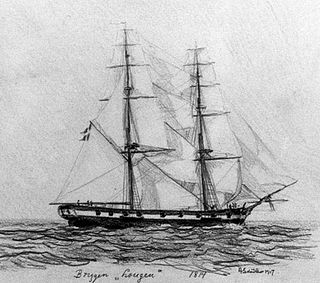
HDMS Lougen was a Danish naval brig launched in 1805. She saw service in the Danish navy and participated in two notable actions against the British Royal Navy during the Gunboat War. In 1814, as a result of the Treaty of Kiel, the Danes transferred her to the Norwegian navy. The Norwegians sold her to German merchants in the Scheld in 1825. She was finally shipwrecked near Bremerhaven in 1881.
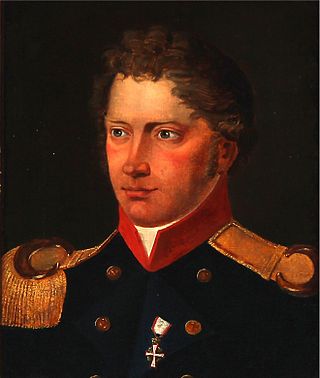
Peter Nicolay Skibsted (1787–1832) was a Danish naval officer with a successful career marred only by the loss in 1810 of a squadron of three gunboats under his command to the British.
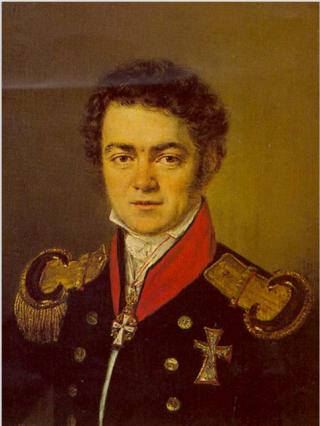
Jørgen Conrad de Falsen was a Danish-Norwegian naval officer who, despite being plagued by ill health, saw duty throughout the Gunboat War during the Napoleonic Wars, and eventually rose to the rank of rear admiral. He married twice, the second marriage being to a lady-in-waiting to the Danish Queen.
HDMS Lolland was launched in March 1810. She served in at least four major engagements during the Gunboat War before she was transferred to the Norwegian navy after the Treaty of Kiel brought about the separation of Norway from Denmark in 1814. Lolland continued to serve with the Norwegian Navy until sold in 1847.
The brig HDMS Langeland, launched in late 1808 and fitted out in 1809, was one of four brigs transferred to Norwegian ports from Denmark on 1 January 1810. From Norway she escorted Danish cargoes or harried enemy (British) merchant shipping. She took part in a successful cruise to the North Cape along with the brig Lougen in 1810 and was later taken into the fledgling Norwegian navy after the 1814 Treaty of Kiel. She was sold into merchant service in 1827.

Lorentz Fisker (1753–1819) was a Danish naval officer who charted the waters of southern Norway and the Kattegat, and organised Norwegian defences against Britain and Sweden.
HMS Forward was a 12-gun gun-brig of the Archer class of the British Royal Navy.
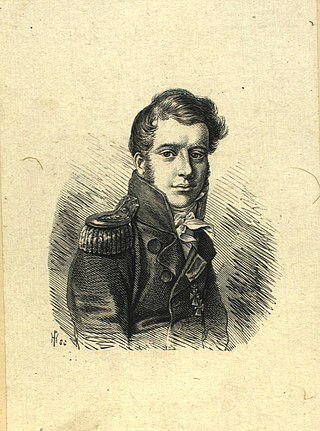
Broder Knud Brodersen Wigelsen was an officer in the Royal Danish-Norwegian navy at the time of the gunboat war with Britain. After the war he served in various capacities, principally in the Danish customs service.
